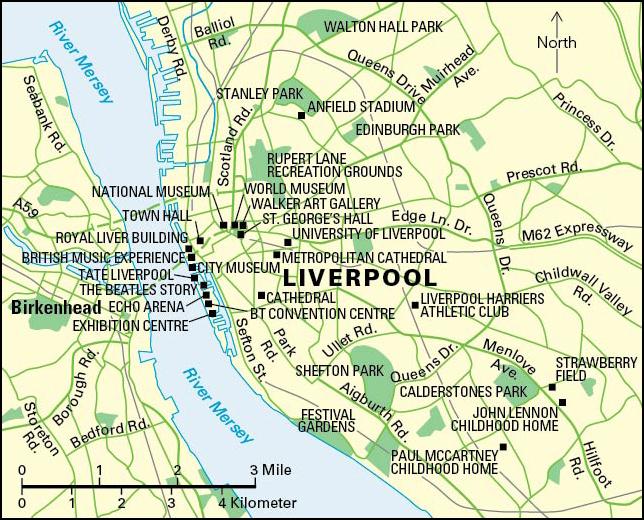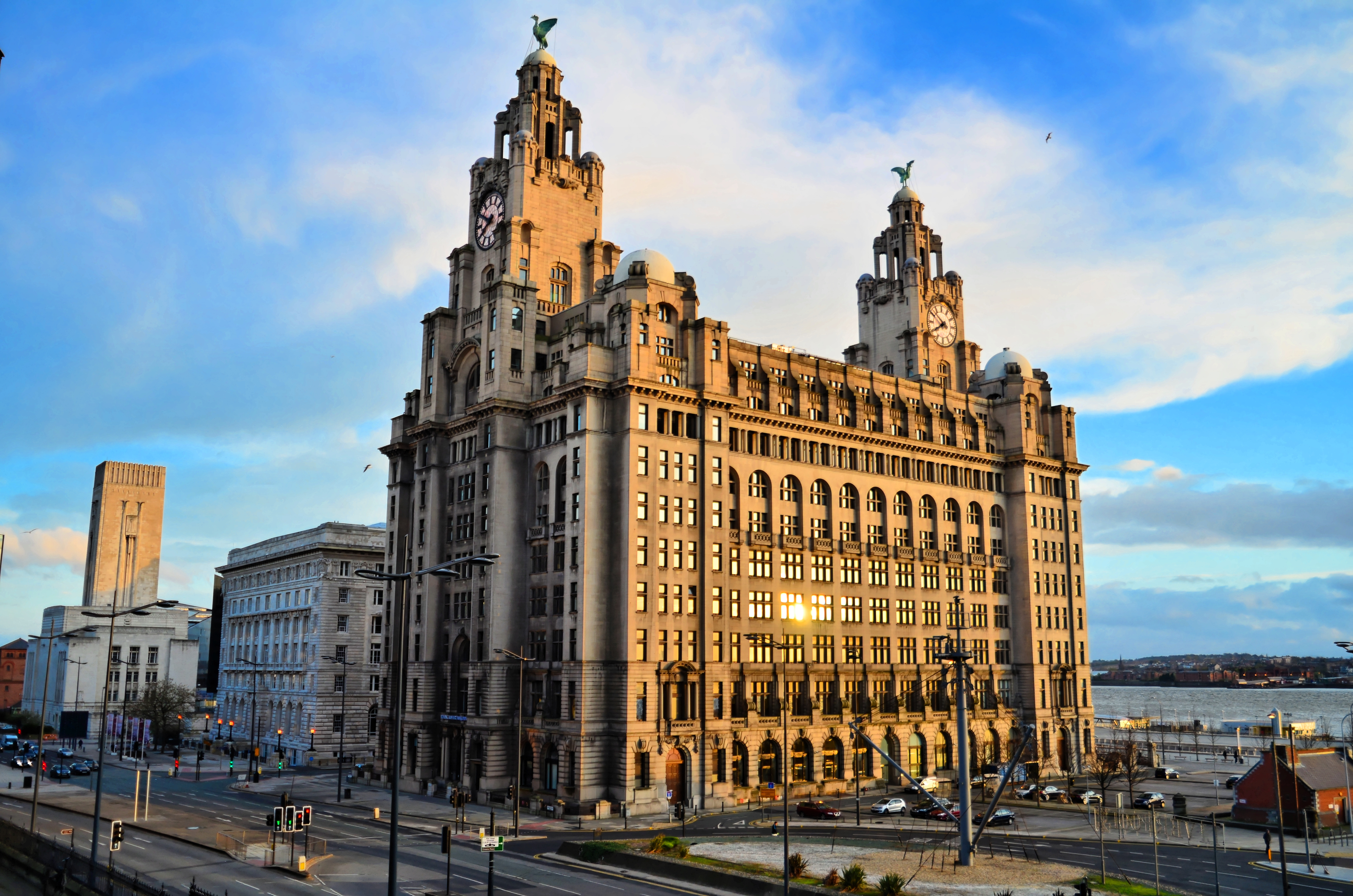Liverpool (pop. 486,068) is a large commercial and manufacturing city in England. It lies on the River Mersey in western England, near the Irish Sea. Liverpool is the chief city, and a metropolitan borough, of Merseyside Metropolitan County, which has a population of 1,423,285.

The commercial center of Liverpool borders the River Mersey. It is one of the largest shopping districts in the United Kingdom. The commercial center has several buildings that are city landmarks. Such structures include the Royal Liver Building, which has twin towers. Each tower is topped by a sculpture of the liver bird, a mythical creature after which the city is said to have been named. Other famous buildings in the commercial center are the Town Hall, built in 1749, and St. George’s Hall, which dates from 1842. St. George’s Hall serves as a court building and public hall.

The inner city of Liverpool lies outside the commercial center. The inner city, which once made up a suburban area, has much old, run-down housing. However, this part of the city also includes the Anglican Cathedral, the Roman Catholic Metropolitan Cathedral, and the University of Liverpool. Suburbs lie beyond the inner city.
The city’s Walker Art Gallery owns one of the United Kingdom’s finest collections of paintings outside London. Liverpool also has an orchestra, several theaters, and two professional soccer teams. Many of Liverpool’s people speak with a local accent called Scouse.
Liverpool is one of five metropolitan boroughs that make up Merseyside Metropolitan County. The other boroughs are Knowsley, St. Helens, Sefton, and Wirral. The Liverpool City Region Combined Authority coordinates economic development and transportation in the five metropolitan boroughs and in nearby Halton.
Liverpool became an important port city in the 1700’s, during the Industrial Revolution. Its port has declined in importance since the 1960’s. Shipping remains an important economic activity in the Liverpool area, but most of it takes place at nearby ports outside the city. Liverpool’s major industrial facilities have included an automobile manufacturing plant, flour mills, and sugar refineries. The manufacture of processed foods and beverages, transportation equipment, and other products remains important in the area. Service industries, including education, health care, and trade, are a leading source of employment in Liverpool.
Liverpool was founded in 1207. It began to flourish as a trade center in the 1700’s. Ships based in Liverpool carried enslaved people from Africa to the Caribbean Islands and North America in exchange for various products. During the 1800’s, trade activities in Liverpool increased sharply, and the city expanded rapidly. During World War II (1939-1945), German bombers heavily damaged the city and its docks. After the war, the decline of the port, plus other factors, contributed to a high rate of unemployment in the area.
